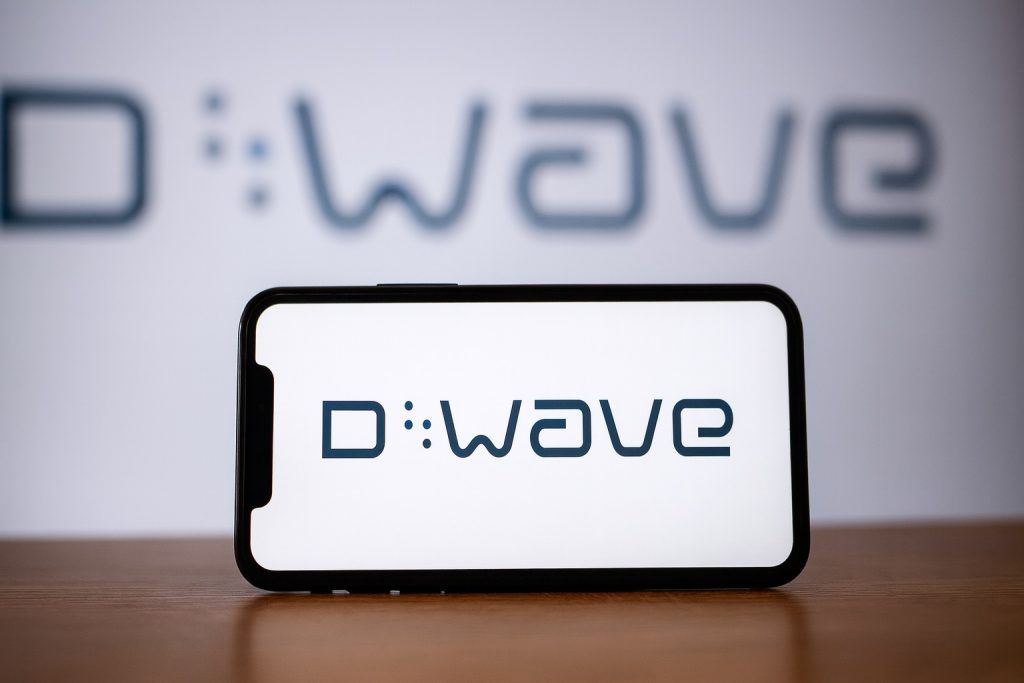- Spectacular Stock Surge: SoundHound AI’s stock (NASDAQ: SOUN) has skyrocketed in 2025, roughly tripling (+240%) over the past year [1] amid intense investor enthusiasm for artificial intelligence. Shares trade around $18 lately after a recent rally – still off their $25 peak but up ~15% in the last week alone as AI-related news fueled speculative buying [2] [3]. Despite this surge, SOUN remains slightly down year-to-date (mid-single-digit %) due to earlier volatility [4], and short interest near 30% of the float reflects ongoing bets against the stock [5].
- AI Hype Catalysts: The latest boost came as AMD’s blockbuster deal with OpenAI stoked excitement across AI stocks. OpenAI agreed to use up to 6 gigawatts of AMD’s GPUs in coming years [6] – a major partnership that sent AMD shares soaring and sparked speculation that smaller AI players like SoundHound could benefit from broader industry growth [7]. Additionally, SoundHound’s stock jumped ~10% after it was named a “Leader” in IDC’s Conversational AI report, which highlighted high customer satisfaction with its voice AI technology [8]. Traders have noted bullish options activity (unusually heavy call buying), suggesting some big investors are positioning for further upside [9].
- Explosive Growth & Deals: SoundHound’s business is booming. In Q2 2025, revenue hit a record $42.7 million, up 217% year-over-year [10]. Management raised its full-year 2025 sales outlook to $160–$178 million (from ~$140M prior) [11] and aims to reach adjusted EBITDA profitability by year-end [12]. The company has expanded via acquisitions (e.g. the $60M purchase of Interactions Corp. in Sept 2025) and inked major partnerships – for example deploying an AI voice ordering system at all Red Lobster restaurants [13] and voice assistants in Hyundai, Stellantis and Honda cars [14]. SoundHound boasts a backlog over $1 billion in booked business, which analysts note is more than 20× its current annual revenue, providing multi-year growth visibility [15].
- Voice-AI Tech Edge: Often called a “voice AI disruptor,” SoundHound provides a platform that lets companies add conversational voice assistants to their products and services. It competes with Big Tech’s voice assistants (Amazon’s Alexa, Apple’s Siri, Google Assistant) and even OpenAI’s chat tech [16]. Experts say SoundHound’s technology holds its own – its proprietary “speech-to-meaning” engine and new Polaris speech model are reportedly 30–40% more accurate than OpenAI’s Whisper or Google’s voice recoginition in some tests [17]. SoundHound has also integrated generative AI (like ChatGPT-style intelligence) into its voice assistants for more natural, complex conversations [18]. An IDC analysis in 2025 noted customers “highly praised [SoundHound’s] ability to handle complex requests with multiple intents” – a key strength for advanced voice applications [19].
- Analyst Sentiment:Wall Street is cautiously optimistic. Oppenheimer recently initiated coverage at Perform (neutral), praising SoundHound’s “strong conversational AI tech platform” and “potential to be a durable growth compounder,” but warning about fierce competition and a rich valuation [20]. Overall, the stock has a Moderate Buy consensus with about 5 Buys vs 2 Holds in recent months [21]. Price targets average ~$15–16, slightly below the latest trading price [22], as some analysts feel the stock’s huge run already reflects a lot of future growth. Notably, SoundHound’s valuation is steep – around 50× 2024 projected sales [23] – so any hiccup in execution could spur pullbacks. Still, many analysts remain bullish given SoundHound’s growth: “The AI boom has put SoundHound on the radar as a potential long-term winner,” one TipRanks analyst noted [24] [25].
- Millionaire Maker?Could SoundHound truly 10× or 100× an investment from here? Turning a $10K stake into $100K (10×) or even $1 million (100×) is the holy grail for investors – such outsized winners exist, but “they are far from common,” as The Motley Fool observes [26]. SoundHound’s management is extremely bullish on its outlook, predicting it can sustain 50%+ organic revenue growth annually “for the foreseeable future” [27]. If they’re right, one analyst calculates SOUN could 10× in ~6 years, roughly turning $10,000 into $100,000 in that span [28]. However, there’s “no guarantee” the company can maintain that torrid growth or fend off rivals long-term [29]. Investors are advised to size positions prudently – even enthusiastic bulls suggest keeping SoundHound to a small portion of a portfolio to balance the high reward and high risk [30].
SOUN Stock Surges on AI Hype and Big News
SoundHound AI’s stock has been on a tear in recent months, riding the wave of excitement surrounding artificial intelligence. The company’s share price has climbed roughly 240% over the past year (and more than doubled in the last six months) [31]. Just in the past week, SOUN jumped about 15%, climbing from the mid-$15s to around $18 per share, amid a broader AI stock rally. One catalyst was Advanced Micro Devices (AMD) announcing a blockbuster partnership with OpenAI: the ChatGPT creator will use up to 6 gigawatts of AMD chips to power its next-gen AI models [32]. This news sent AMD stock soaring and spilled over into smaller AI names like SoundHound, as traders speculated about “potential collaborations and growth opportunities in the AI space,” according to TipRanks [33]. Essentially, when big deals validate the AI industry’s prospects, investors tend to bid up all AI-related stocks in sympathy.
Another boost for SoundHound came from a dose of industry recognition. In late September, IDC named SoundHound a Leader in Conversational AI Platforms, highlighting the company’s strong user satisfaction and technological capabilities [34]. After that announcement, SoundHound’s stock popped ~10% in a single week [35]. The IDC report specifically praised SoundHound’s voice AI for its ability to understand intent, handle context shifts, remember conversations, and manage complex requests – critical skills for any advanced digital assistant [36]. This external validation reinforced investor confidence that SoundHound’s technology is truly competitive.
It hasn’t all been smooth sailing; SoundHound’s stock is volatile. Earlier in 2025, the share price pulled back from exuberant highs (it hit $24.98 at one point) [37], and even after the recent surge it remains a few percent below its level at the start of the year [38]. The stock’s ups and downs are partly driven by swings in market sentiment toward high-growth tech. Retail investors on forums have latched onto SOUN as a favorite AI play – one poll on Stocktwits showed 73% bullish sentiment among users [39] – which means hype can sometimes outpace fundamentals. Meanwhile, short sellers have also targeted SoundHound: roughly 30% of the float is sold short [40], indicating skepticism in some quarters about the company’s valuation. This mix of passionate bulls and bears sets the stage for big price moves (a high short interest can even fuel a “short squeeze” if positive news forces skeptics to buy back shares rapidly [41]).
For now, momentum is clearly on the bulls’ side. Options markets recently showed a bullish tilt, with far more calls being traded than puts (a put/call ratio around 0.3) and implied volatility elevated [42]. Such activity suggests that some investors are betting on further upside ahead. In short, SoundHound AI has entered the spotlight as one of 2025’s hottest AI stocks, with traders aggressively piling in on any news that reinforces the growth narrative. But how much of this enthusiasm is justified by the company’s actual business progress?
Voice AI Disruptor with Explosive Growth and Deals
SoundHound AI isn’t just another speculative concept stock – the company has real technology and customers driving its rapid growth. Founded in 2005 by CEO Keyvan Mohajer, SoundHound started in music recognition (a la Shazam) and later pivoted to a broader mission: enabling people to talk naturally to computers in any setting [43] [44]. Today, SoundHound offers a voice AI platform (“Houndify”) that businesses can integrate into their products and services, rather than selling its own consumer devices. This business-to-business (B2B) model means you might use SoundHound’s AI without knowing it – for example, when you speak to the voice assistant in a car or order food via an automated drive-thru, SoundHound could be powering the interaction behind the scenes [45] [46].
The company has carved out notable partnerships across industries. Automakers like Hyundai, Mercedes-Benz, Honda, and Stellantis use SoundHound’s voice assistant in select models [47], allowing drivers to control navigation, music, and vehicle functions through natural speech. In the restaurant sector, SoundHound’s AI voice agents are handling drive-thru orders and phone ordering – it recently rolled out an AI ordering system to all 700+ Red Lobster locations in the U.S. [48], after successful pilots with chains like White Castle and Chipotle. SoundHound is also deployed in healthcare (appointment scheduling via voice), customer service call centers, smart home devices, and banking apps [49] [50]. This broad adoption across automotive, hospitality, retail, finance, and more shows the horizontal appeal of its technology.
Crucially, SoundHound’s product appears to be competitive with (and in some ways superior to) Big Tech’s offerings. The company’s secret sauce is its proprietary “Speech-to-Meaning” engine – rather than the typical two-step process of converting speech to text then to intent, SoundHound’s system extracts meaning directly from speech in real time [51]. This yields fast responses and the ability to handle complex, multi-part queries in one go. (A famous demo involved asking a single convoluted question with multiple criteria – something like finding nearby hotels under $200 that allow pets and are near a park – which SoundHound’s app could parse and answer in one shot [52].) The company has continually improved its AI: its latest Polaris speech recognition model is reportedly 30–40% more accurate than OpenAI’s Whisper or Google’s voice AI in certain tests [53]. SoundHound has also embraced the latest trend of generative AI, launching “SoundHound Chat AI” to give its voice assistants more intelligence to hold conversations, remember context, and answer open-ended questions by tapping large language models [54]. These capabilities position SoundHound as a nimble innovator in a field dominated by giants – a “voice tech disruptor,” as some have dubbed it.
All this has translated into blistering financial growth. In the second quarter of 2025, SoundHound’s revenue soared 217% year-over-year to $42.7 million [55]. Some of that growth was boosted by acquisitions of smaller AI firms that added to its revenue base, but even organic growth was very strong. Even more encouraging, SoundHound’s customer base isn’t just expanding – existing customers are spending more, a sign of value. In Q2, management noted that 7 of the world’s top 10 financial institutions are now clients, and four of those expanded their contracts or renewals with SoundHound [56]. This kind of land-and-expand dynamic indicates that once companies deploy SoundHound’s voice AI and see results, they tend to broaden its use.
The company’s backlog of booked orders has exploded, reaching over $1 billion by late 2025. For a company on track for ~$165 million in annual revenue [57], a backlog more than 20× its current revenue provides remarkable visibility. In other words, SoundHound has over a billion dollars of future work already signed in multi-year contracts – a strong vote of confidence from its enterprise clientele [58]. This backlog suggests that SoundHound’s services have a long growth runway, as clients roll out voice AI across products and geographies in the coming years.
To capitalize on the opportunity, SoundHound has been actively investing and expanding. It made three acquisitions in 2023–2025 to bolster its technology and market reach. Most recently in September 2025, SoundHound agreed to acquire Interactions Corp. (an AI customer-service automation firm) for about $60 million [59]. Analysts reacted positively, seeing it as a move that “strengthens SoundHound’s intellectual property” and brings in complementary enterprise customers [60]. Earlier, SoundHound acquired a restaurant voice-tech specialist (SYNQ3) and the AI division of Amelia (an AI assistant company) [61]. These deals have not only added new capabilities (like drive-thru order automation) but also about 400 patents to SoundHound’s IP portfolio [62] [63]. On the product front, SoundHound launched a new Vision AI module in 2025 that gives its platform eyes along with ears – the AI can now interpret visual context (for instance, recognizing objects or reading a scene through a camera) while engaging in voice dialogue [64]. This multimodal approach is at the cutting edge of AI assistants.
Given these developments, it’s no surprise SoundHound is earning accolades. Being named an industry leader by IDC in its category was a significant milestone [65]. According to IDC’s analysis, customers gave SoundHound especially high marks for the sophistication of its natural language understanding and the flexibility of its platform [66]. One excerpt noted customers “highly praised [SoundHound’s] ability to handle complex requests with multiple intents” [67] – essentially confirming that the company’s focus on deep understanding is paying off in real-world usage. Such feedback helps differentiate SoundHound from simpler voice assistants that might falter at anything beyond basic commands. All told, SoundHound has positioned itself as a premier independent voice AI provider, catering to companies that want cutting-edge voice interfaces without relying on Big Tech’s ecosystems. This positioning and the tremendous growth rates have set high expectations among investors.
Wall Street’s Take – Big Potential, Big Valuation
The frenzy around SoundHound AI has Wall Street’s attention. Equity analysts covering the stock largely agree that SoundHound has impressive technology and a huge market opportunity – but some are wary of the hype outpacing reality. Oppenheimer, for example, initiated coverage on SOUN in September 2025 with a Perform (neutral) rating. The firm’s analyst lauded SoundHound’s “strong conversational AI tech platform” and “potential to be a durable growth compounder” over time [68]. In other words, they see SoundHound as a company that could keep growing steadily for years, riding the AI wave. However, Oppenheimer also cited significant concerns: they warned that SoundHound faces “fierce competition” from much larger players and sits at a “rich valuation” after its stock’s big run [69]. That balanced view sums up the debate – the tech and growth are exciting, but is the price already too high for what you get?
Most other analysts are leaning bullish. As of early October, around 5 out of 7 analysts covering SoundHound rate it a Buy/Outperform, with the rest on Hold [70]. TipRanks data shows a Moderate Buy consensus and an average 12-month price target of about $15.33 [71]. That target is actually below the current share price (~$18), implying analysts overall see the stock as fully valued for now or expect some pullback. Price targets range widely – a few bullish analysts have high-teens targets (essentially forecasting further upside), while more cautious ones are in the low double-digits [72]. The wide range reflects uncertainty about how fast SoundHound can grow and how to value a company that is not yet profitable.
Speaking of valuation, by any traditional measure SoundHound looks expensive. At ~$18/share, its market capitalization is around $6.6–7 billion [73]. That’s about 50 times the revenue it’s expected to generate in 2024 [74] – a sky-high price-to-sales multiple that assumes many years of hefty growth ahead. It’s not unusual for cutting-edge AI companies to trade at lofty multiples (investors are effectively pricing in future earnings that haven’t materialized yet), but it does mean the stock could be vulnerable if growth slows. As Goldman Sachs’ Katherine Bordlemay noted about AI stocks generally, “valuations are elevated… at the end of the day, the key will be delivery of earnings” [75]. SoundHound will eventually need to turn its booming sales into real profits to justify its valuation. The company is making progress on that front – it aims to achieve EBITDA break-even by Q4 2025 [76], which would be a big milestone. Still, true net profitability is likely a bit further out as they continue to invest in R&D and growth.
Despite the high valuation, investor appetite remains strong, especially among retail traders excited about AI. On social media forums, SoundHound is frequently discussed as a potential big winner. That enthusiasm contributed to a rapid run-up (for instance, a ~23% surge in September was “largely attributed to online hype” rather than new fundamentals [77]). The heavy short interest (~30% of float) also plays into trading dynamics [78]. With so many shares sold short, any decidedly positive news can force short sellers to cover positions in a hurry, pushing the stock even higher (the classic short squeeze scenario). In fact, some of SoundHound’s sharp rallies have shown characteristics of a squeeze – when momentum builds, it feeds on itself. On the flip side, high short interest also signals that skeptics see downside in the stock, perhaps expecting that the hype will fade or that bigger AI firms could encroach on SoundHound’s turf.
For now, analysts generally advise a balanced approach. Those bullish on SoundHound say its recent contracts and technical achievements justify optimism that it will grow into its valuation. They point to the massive $1B+ backlog and the company’s ability to win marquee clients as evidence that SoundHound can eventually produce significant cash flows. More cautious voices recommend watching how upcoming quarters turn out – does SoundHound keep beating its guidance and closing big deals? Already, consensus estimates anticipate about $40M in revenue for Q3 (which would be ~200% growth YoY) [79]. If the company delivers numbers like that consistently (and perhaps surprises with progress toward profitability), the bullish thesis strengthens. However, any sign of growth deceleration or loss of a major customer could spark a sharp correction in the stock given its rich pricing. In sum, Wall Street sees SoundHound as a high-reward, high-risk story: potentially transformative in the long run, but priced for perfection in the near term.
Can SoundHound 10× Your Money? Outlook and Risks
With the stock’s dramatic ascent, many investors are now asking: How much higher can SoundHound go? Could it really be the kind of once-in-a-generation stock that turns a modest investment into a fortune? Turning $10,000 into $100,000 (a 10× gain) or even into $1,000,000 (a 100× gain) is the sort of outcome that makes legends – and it’s exceptionally rare. As one investing expert noted, while there have been stocks that delivered 100× returns, “they are far from common.” [80]
SoundHound’s bulls believe the company has a shot at extraordinary returns because of its small starting size and huge addressable market. The voice AI market spans smart vehicles, consumer devices, enterprise services and more – essentially anywhere a human might talk to a machine. If SoundHound can establish itself as a leading independent platform for this burgeoning field, the upside could indeed be enormous. For perspective, SoundHound’s annual revenue is on pace for ~$165 million [81], whereas tech giants like Amazon and Google generate hundreds of billions (and their voice assistants, while widespread, are not big direct revenue drivers yet). This means SoundHound is playing in a space where even mid-tier success (say, becoming a standard in many cars or powering a popular voice app platform) could multiply its revenue manyfold. Moreover, the company’s leadership is very optimistic: SoundHound’s management publicly stated they expect 50%+ organic growth to continue “for the foreseeable future,” on top of any acquired growth [82]. At a 50% compound annual growth rate, revenue would double roughly every 1.5 years. If the stock price tracked that growth, a 10× increase in the stock over 5–6 years is mathematically plausible [83]. In fact, a Motley Fool analysis pointed out that at a sustained 50% growth rate, $10k invested in SOUN today could potentially become $100k in about six years [84] (though that assumes the market continues to value the company at a similar revenue multiple).
However, potential is not the same as reality, and there are heavy caveats to the “millionaire maker” thesis. First, competition: SoundHound operates in an arena dominated by trillion-dollar titans (Amazon, Google, Apple) and well-funded AI labs like OpenAI [85]. These players are not standing still. Amazon just rolled out a more conversational Alexa with generative AI abilities in 2025, and Google is integrating its advanced Bard/Gemini AI into Google Assistant [86]. OpenAI’s ChatGPT and Whisper are continuously improving at understanding natural language. While SoundHound currently claims a quality edge in certain use-cases [87], maintaining that lead will be tough when competitors have far larger R&D budgets. It’s notable that SoundHound’s strategy is to offer a white-label alternative – many companies don’t want to rely on Big Tech’s voice assistants due to data privacy or branding reasons [88]. This gives SoundHound a foothold. But there is nothing stopping a giant like Microsoft (which owns Nuance’s voice tech) or others from aggressively courting the same enterprise customers with perhaps cheaper bundled offerings. If Big Tech decides to undercut SoundHound or replicate its customizability, that could slow SoundHound’s trajectory.
Second, execution risk: to justify a 10× or 100× gain, SoundHound must flawlessly execute its growth plans for years on end. This means continually winning new clients, expanding usage with existing clients, and possibly entering new markets – all while fending off rivals and managing its finances. The company’s recent growth has been superb, but as it gets larger, growth rates will naturally moderate. Going from $40M to $120M in quarterly revenue is one thing; going from $200M to $2 billion is another – it requires penetrating many more customers and likely facing pricing pressure. SoundHound will also need to achieve sustainable profitability at some point. It has been investing heavily (even incurring some one-time costs that widened its net loss in Q2 [89]), which is fine for now, but long-term 100× stories eventually require real earnings power. If margins don’t materialize or if cash runs low, the company could need to raise more capital (diluting shareholders) or take on debt.
Third, valuation risk: even if SoundHound’s business does very well, the stock’s valuation multiple could compress. In frothy times, investors pay 50× sales; in normal times, they might only pay, say, 10× sales for a good growth company. If over the years SoundHound grows into a larger, more stable company, its price-to-sales (or price-to-earnings) ratio could decline, muting stock gains relative to business gains. For instance, delivering 50% growth for several years might increase revenue 10-fold, but if by then the market only values it at 10× sales instead of 50×, the stock price might “only” double or triple, not 10× – still a great return, but not millionaire-making from here. The current average analyst price target of ~$15 [90] actually reflects an expectation of some multiple contraction in the near term, as that target is below today’s price despite growth expectations. This doesn’t mean analysts are always right, but it shows even bulls think the easy money may have been made in the short run.
All these risks underscore why financial advisors often urge caution with hot stocks. One Motley Fool analyst explicitly advised investors to “balance portfolio sizing with risk” in speculative names like SoundHound – e.g. keeping it at a small (1-2%) position in your portfolio [91]. That way, if the stock implodes due to unforeseen issues, the damage is limited, but if it truly does 10×, that small stake can still significantly boost overall returns. SoundHound’s risk-reward profile is extreme: it could multiply further if everything goes right, or it could stumble (say, growth falls short or an aggressive competitor emerges) and the stock could lose significant value. The presence of short sellers betting against it is a reminder that not everyone is convinced SoundHound will be a long-term winner at its current valuation.
So, could SoundHound make you a millionaire? It’s possible – but it would require a confluence of positive outcomes over many years. The company would need to continue innovating and dominating its niche in voice AI, essentially becoming the go-to solution for conversational AI across numerous industries worldwide. If that happens, SoundHound’s revenues could be in the billions a few years from now, potentially supporting a stock price many times higher than today’s. For example, optimistic forecasts envision SoundHound leveraging its $1B backlog into a steady stream of revenues and perhaps expanding into consumer apps or international markets, thereby keeping its growth at an unusually high clip. In an AI-hungry market, such a narrative can’t be ruled out – especially with management’s confidence (the CEO even said the Interactions acquisition “makes SoundHound even stronger as we establish the company as a true leader for the new AI era” [92]).
However, investors should temper their expectations. Betting on any single stock to go 100× is like hoping to win the lottery – thrilling if it works, but statistically unlikely. Even a 10× outcome, while more attainable, is far from guaranteed here. As one market commentator quipped, “time will tell” if SoundHound becomes a huge winner, but it must execute perfectly and also maintain investor confidence along the way [93]. Already, the company’s impressive growth is “baked in” to much of the stock’s current price. Future returns will depend on beating those high expectations – delivering not just strong growth, but stronger growth than the market anticipates, and demonstrating a path to profitability that justifies a multi-billion valuation.
Conclusion: High Hopes in a Rapidly Evolving Arena
SoundHound AI has undeniably made a big splash in 2025. Its voice AI technology and surging revenues have positioned it as a standout player in the AI boom, and the stock’s meteoric rise reflects investors’ hopes that it could be the next big success story. The company’s ability to outperform tech giants in certain niches, secure big-name clients, and achieve triple-digit growth rates gives credibility to the bullish case. If Voice AI truly becomes as ubiquitous as mobile apps or cloud services, SoundHound could ride that wave to extraordinary heights.
Yet, the road ahead is full of challenges. SoundHound faces intense competition and must prove that it can turn its early lead and innovation into durable competitive advantages. It also needs to transition from simply growing fast to growing responsibly – i.e. moving toward profitability and operating at scale without hiccups. The current market euphoria around AI will eventually demand real earnings and cash flow to back up the valuations.
For investors, SoundHound AI represents a high-stakes bet on the future of human-computer interaction. It’s exactly the kind of company that could either explode further in value as its tech becomes indispensable – or deflate if the AI hype moves on to the next thing or if bigger fish eat its lunch. Prudent investors will watch upcoming earnings (like the Q3 results) for validation of SoundHound’s trajectory. Metrics like organic growth (excluding acquisitions), gross margins, and cash burn will be key to gauging its long-term viability.
In summary, SoundHound AI is a fascinating story at the intersection of cutting-edge tech and investor exuberance. It has “moonshot” potential to enrich believers if everything goes right [94]. But it also carries substantial risk, and even the most optimistic experts acknowledge that nothing is guaranteed in the fast-moving AI race [95]. As the saying goes, disruption works both ways – SoundHound is trying to disrupt incumbents, but must avoid being disrupted itself. Whether it ultimately lives up to its ambitious promise will unfold in the coming years, making SoundHound a stock to watch closely for anyone interested in AI’s frontier and the fortunes that might be made (or lost) along the way.
Sources:
- Yahoo Finance/Motley Fool – “Here’s How SoundHound AI Could Turn $10,000 Into $100,000” (Oct 4, 2025) [96] [97] [98]
- The Motley Fool – “Could SoundHound AI Stock Help You Become a Millionaire?” (Oct 6, 2025) [99] [100]
- TipRanks – “Is SoundHound AI Stock (SOUN) Surging on AMD-OpenAI News?” (Oct 2025) [101] [102] [103] [104]
- TipRanks/TheFly – “Mixed options sentiment in SoundHound AI…with shares near $18.20” (Oct 2025) [105]
- TechSpace (ts2.tech) – “SoundHound AI (SOUN) Stock Soars on AI Hype: 217% Growth, Major Deals…” (Oct 2, 2025) [106] [107] [108] [109]
- TechSpace (ts2.tech) – “SoundHound AI: The Voice Tech Disruptor Challenging Siri, Alexa…” (Sept 14, 2025) [110] [111] [112] [113]
- TechSpace (ts2.tech) – “AI Stock Frenzy… Rock Markets (Aug 13–14, 2025)” (Aug 14, 2025) [114] [115]
- TechSpace (ts2.tech) – “Artificial Intelligence News: 7 October 2025” – IDC MarketScape recognition [116] and CEO quotes on Interactions acquisition [117].
References
1. ts2.tech, 2. www.tipranks.com, 3. www.tipranks.com, 4. www.tipranks.com, 5. ts2.tech, 6. www.tipranks.com, 7. www.tipranks.com, 8. www.tipranks.com, 9. www.tipranks.com, 10. ts2.tech, 11. ts2.tech, 12. ts2.tech, 13. ts2.tech, 14. ts2.tech, 15. ts2.tech, 16. ts2.tech, 17. ts2.tech, 18. ts2.tech, 19. ts2.tech, 20. ts2.tech, 21. ts2.tech, 22. ts2.tech, 23. ts2.tech, 24. www.tipranks.com, 25. www.tipranks.com, 26. www.sharewise.com, 27. www.nasdaq.com, 28. www.nasdaq.com, 29. www.nasdaq.com, 30. www.nasdaq.com, 31. ts2.tech, 32. www.tipranks.com, 33. www.tipranks.com, 34. www.tipranks.com, 35. www.tipranks.com, 36. www.tipranks.com, 37. ts2.tech, 38. www.tipranks.com, 39. ts2.tech, 40. ts2.tech, 41. ts2.tech, 42. www.tipranks.com, 43. ts2.tech, 44. ts2.tech, 45. ts2.tech, 46. ts2.tech, 47. ts2.tech, 48. ts2.tech, 49. ts2.tech, 50. ts2.tech, 51. ts2.tech, 52. ts2.tech, 53. ts2.tech, 54. ts2.tech, 55. ts2.tech, 56. www.nasdaq.com, 57. ts2.tech, 58. ts2.tech, 59. ts2.tech, 60. ts2.tech, 61. ts2.tech, 62. ts2.tech, 63. ts2.tech, 64. ts2.tech, 65. ts2.tech, 66. ts2.tech, 67. ts2.tech, 68. ts2.tech, 69. ts2.tech, 70. ts2.tech, 71. www.tipranks.com, 72. ts2.tech, 73. ts2.tech, 74. ts2.tech, 75. ts2.tech, 76. ts2.tech, 77. ts2.tech, 78. ts2.tech, 79. ts2.tech, 80. www.sharewise.com, 81. ts2.tech, 82. www.nasdaq.com, 83. www.nasdaq.com, 84. www.nasdaq.com, 85. ts2.tech, 86. ts2.tech, 87. ts2.tech, 88. ts2.tech, 89. ts2.tech, 90. www.tipranks.com, 91. www.nasdaq.com, 92. ts2.tech, 93. www.nasdaq.com, 94. www.nasdaq.com, 95. www.nasdaq.com, 96. www.nasdaq.com, 97. www.nasdaq.com, 98. www.nasdaq.com, 99. www.sharewise.com, 100. www.sharewise.com, 101. www.tipranks.com, 102. www.tipranks.com, 103. www.tipranks.com, 104. www.tipranks.com, 105. www.tipranks.com, 106. ts2.tech, 107. ts2.tech, 108. ts2.tech, 109. ts2.tech, 110. ts2.tech, 111. ts2.tech, 112. ts2.tech, 113. ts2.tech, 114. ts2.tech, 115. ts2.tech, 116. ts2.tech, 117. ts2.tech







